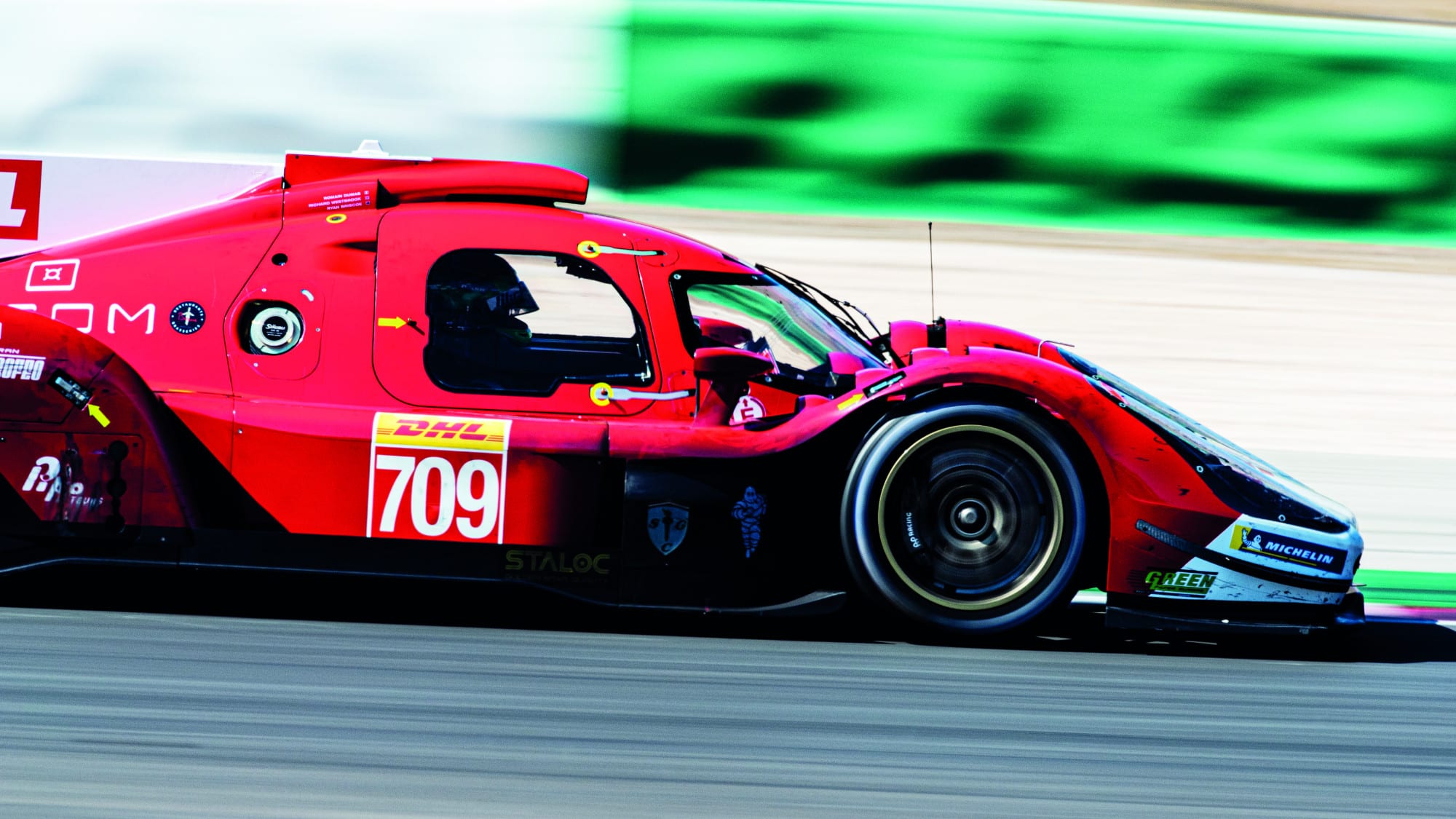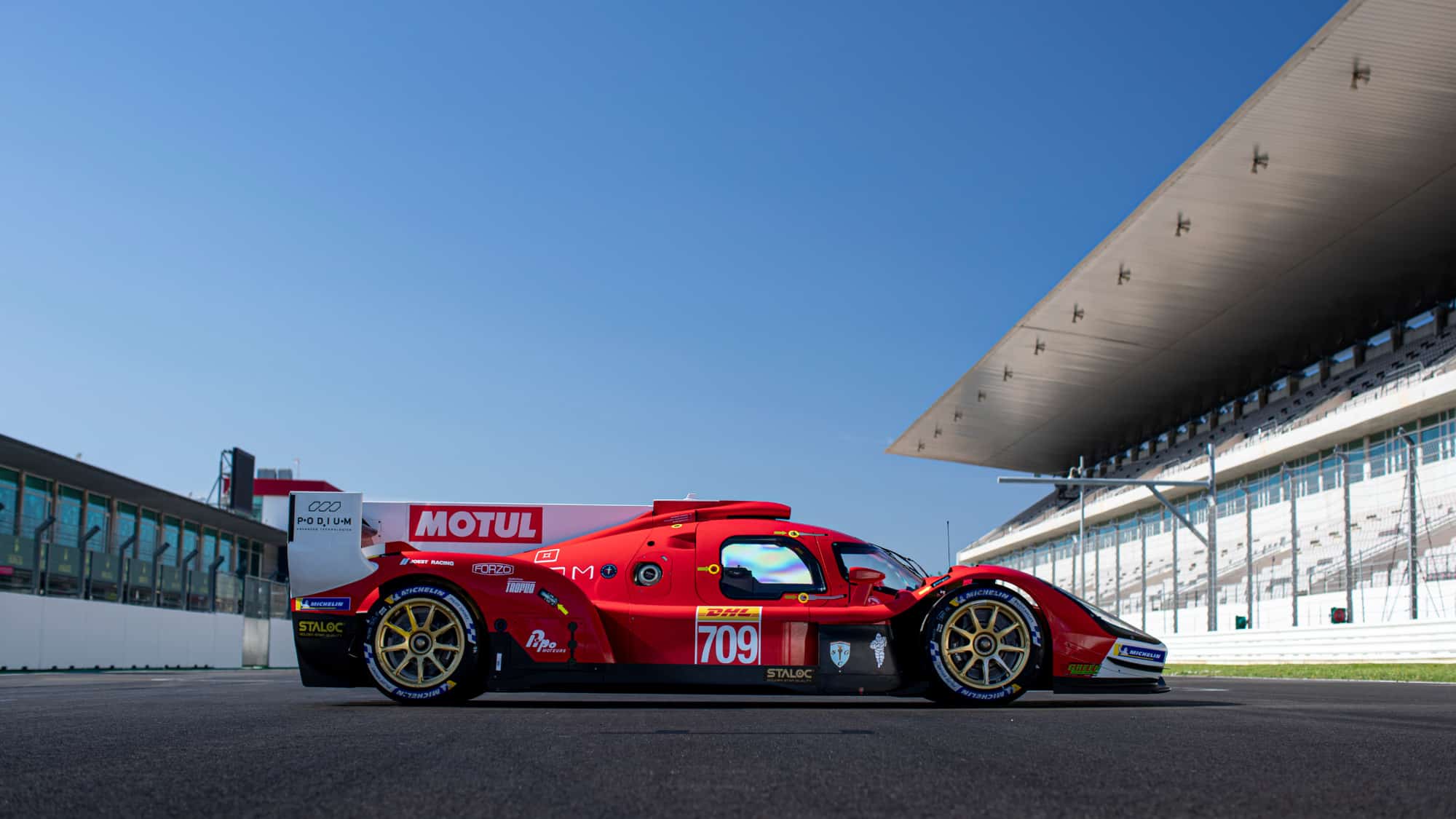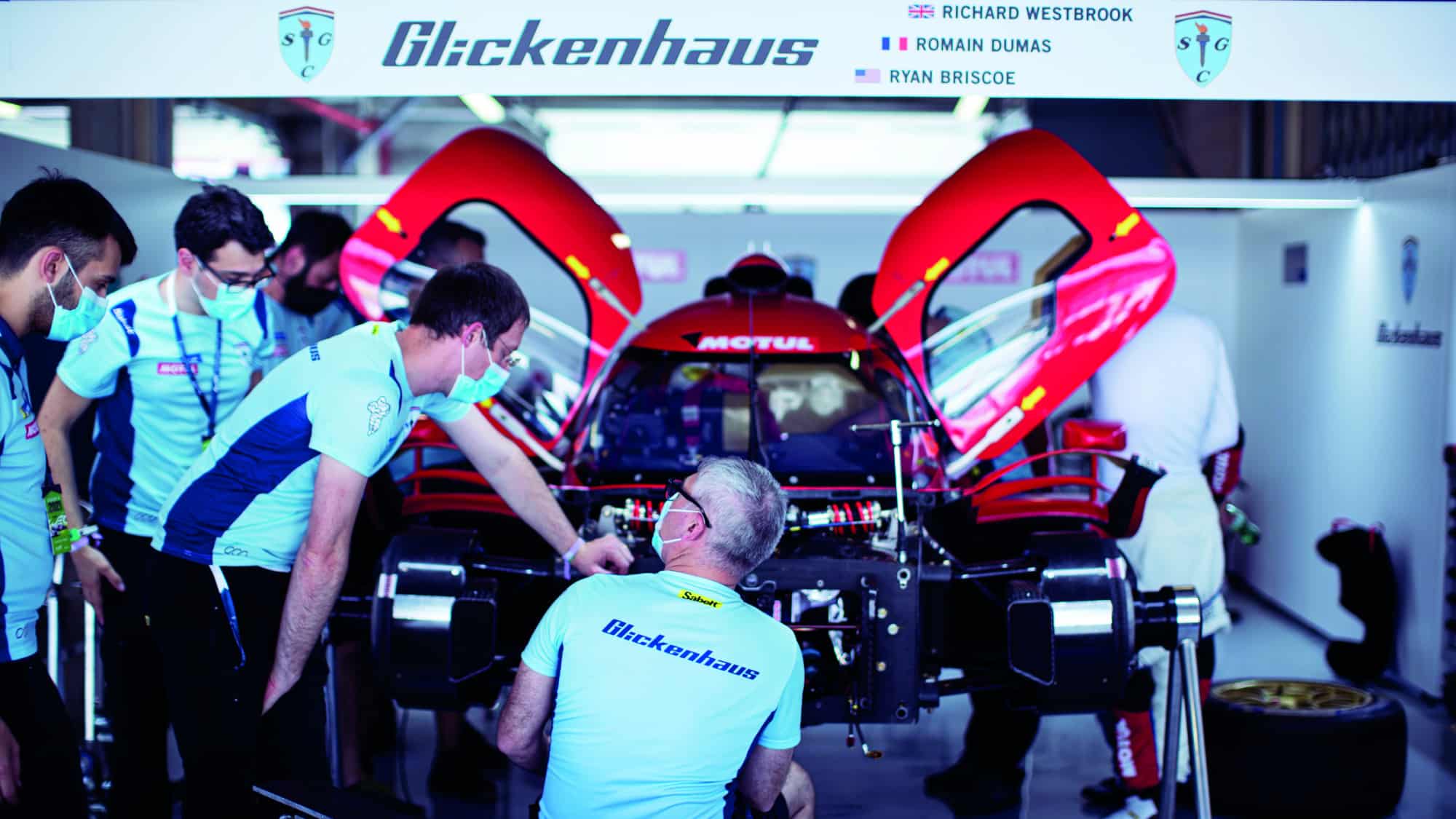Jim Glickenhaus: the Le Mans Hypercar privateer
Are you looking at the next Le Mans winner? The owner of the Glickenhaus 007 believes so. Gary Watkins speaks with filmmaker and automotive entrepreneur Jim Glickenhaus about his plans to topple the big guys on the world’s greatest stage
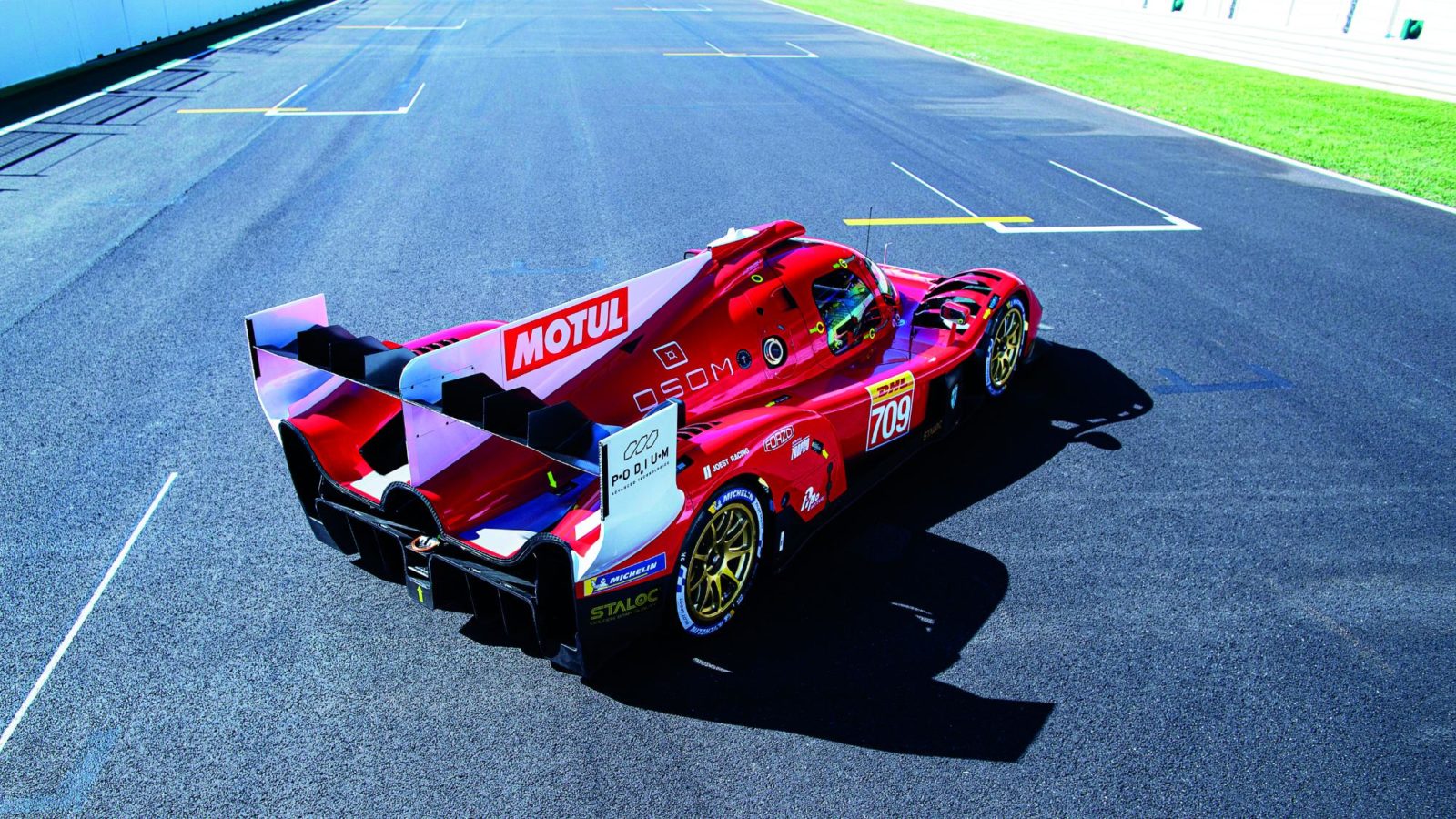
Drew Gibson
Jim Glickenhaus used to be best known as a film director, producer and writer. The Exterminator, the 1980 cult vigilante movie, is probably his most famous flick. These days, however, he’s more prominent as the vocal boss of a fledgling sports car company with a big social media profile only matched by its aspirations on the race track. He’s heading to the Le Mans 24 Hours to take on the might of Toyota from this year, Peugeot perhaps as early as next season, and then Ferrari, Porsche and Audi from 2023. And he thinks he can win.
The New Yorker, who turned 71 in July, is a self-confessed car and racing nut with a collection of vehicles significant in size and historical importance. That was the starting point of his dream to race at Le Mans, one he will fulfil in August when his team pitches up at the centrepiece round of the World Endurance Championship with a pair of Le Mans Hypercars bearing his name and built with his money.
The road to the Glickenhaus-Pipo 007 LMH – to give the Le Mans racer designed and developed in Italy its full name – has by his own admission been long and winding. There was “never a conscious plan”, insists Glickenhaus. Rather, his aspirations “grew organically”.
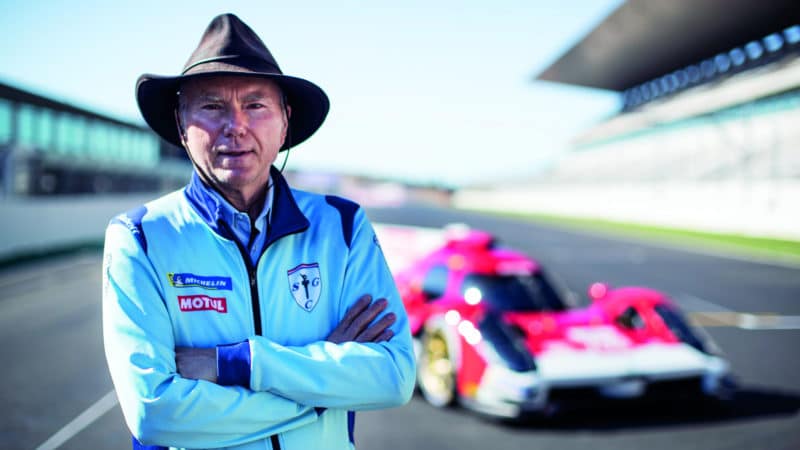
The waiting is almost over for Jim. Two Glickenhaus 007s will compete at Le Mans in the Hypercar class
Drew Gibson
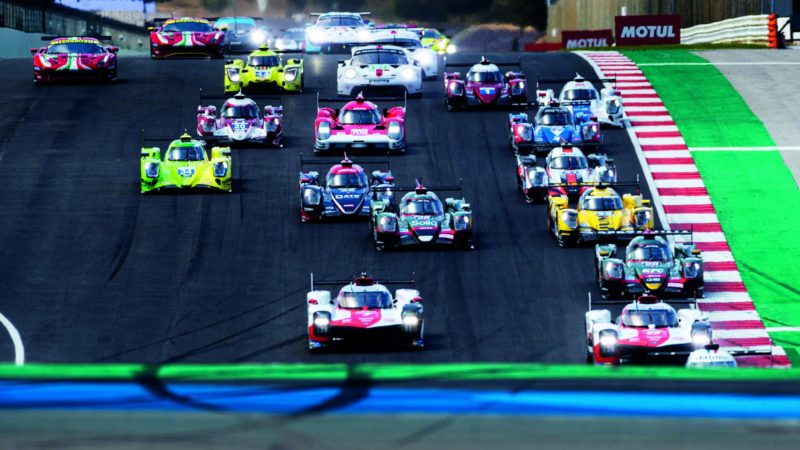
The 007 made its race debut in the Portimão 8 Hours. No709 can be seen in the centre of this image; the rival Toyotas are in the foreground
Drew Gibson
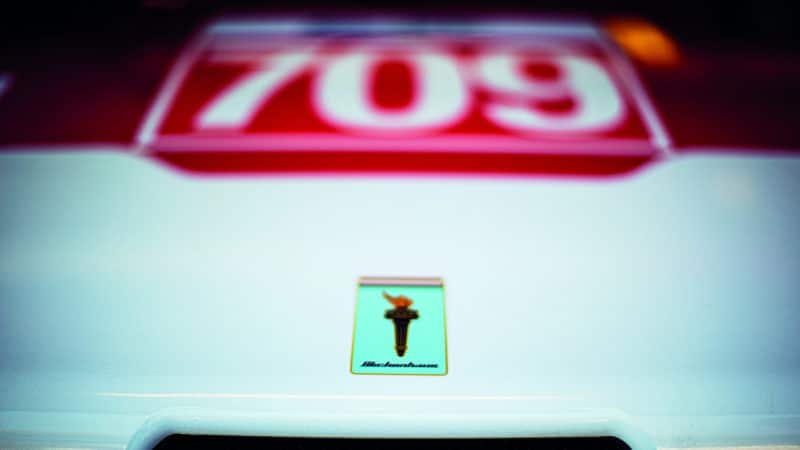
Drew Gibson
But the seed of the idea to race at Le Mans was there almost from the moment he took the first step towards becoming a constructor.
He commissioned the Pininfarina styling house to build him what he describes as “a homage” to the 330 P3/4 chassis no0846, which won the 1967 Daytona 24 Hours with Chris Amon and Lorenzo Bandini, that sits in his collection in Sleepy Hollow, New York. When his P4/5 by Pininfarina, based on the Ferrari Enzo supercar chassis and powertrain, was unveiled to the world at the Pebble Beach concours in 2006, the question was, what next? The obvious answer to Glickenhaus was to build a competition version. But where to race it?
“I called the Automobile Club de l’Ouest at Le Mans, and they said, ‘But Jim, it’s a one-off,’” recalls Glickenhaus. “‘What class is it going to run in?’ So then I went to the Nürburgring and spoke to Peter Geisheker.”
Glickenhaus got a yes from the late promoter of the Nürburgring 24 Hours through his WIGE Media TV production company. But he wasn’t aware of just how tentative that yes was at the time.
“Peter asked me what I planned to do, and I told him that I wanted to make a car that looked like my P4/5 by Pininfarina but was basically a GT2 Ferrari underneath,” explains Glickenhaus. “He said, ‘Great’, but he later told me that he thought the chances of us showing up were zero.”
Scuderia Cameron Glickenhaus, the name of the company he set up incorporating wife Meg’s maiden name, did show up for the ’Ring enduro in 2011 with a car known as the SCG P3/4 Competizione. It was essentially a Ferrari F430 Stradale loaded with components from the GT2 race version and clothed in bodywork styled after the P4/5.
“When his P4/5 was unveiled in 2006, the question was, what next?”
A hybrid version of the same car, now known as the P4/5 Modificata, followed the next year and the SCG 003C, the company’s first ground-up design, in 2015 – two years before it took pole at the Nürburgring enduro.
Next came the 004C, a Glickenhaus rather than an SCG, that raced at the ’Ring for the first time in 2020 and will become the marque’s first road car. Deliveries have been delayed as full type approval is sought, but the boss is aiming to sell “hundreds, if not a 1000”.
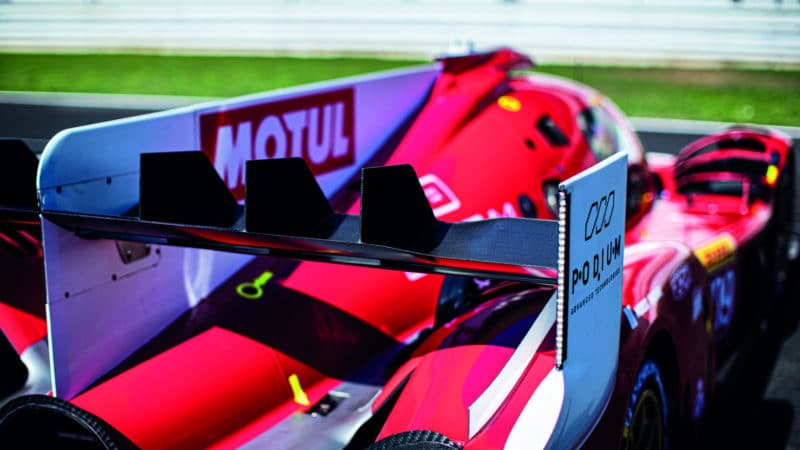
Drew Gibson
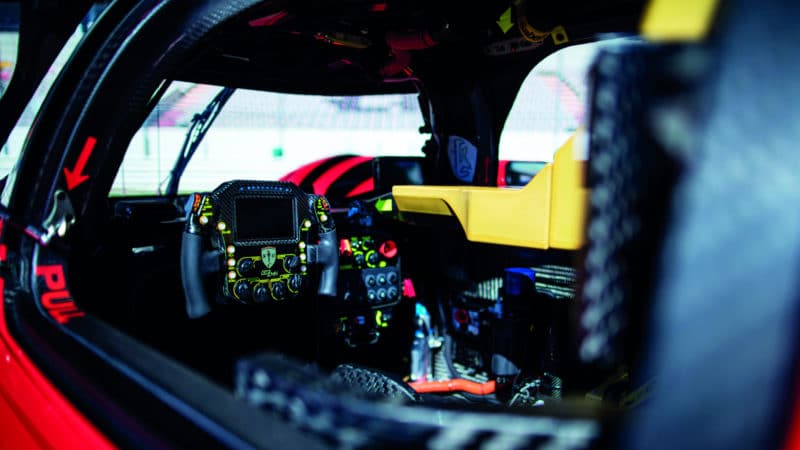
The 007 was devised with Le Mans in mind rather than the twists and turns of Portimão
Drew Gibson
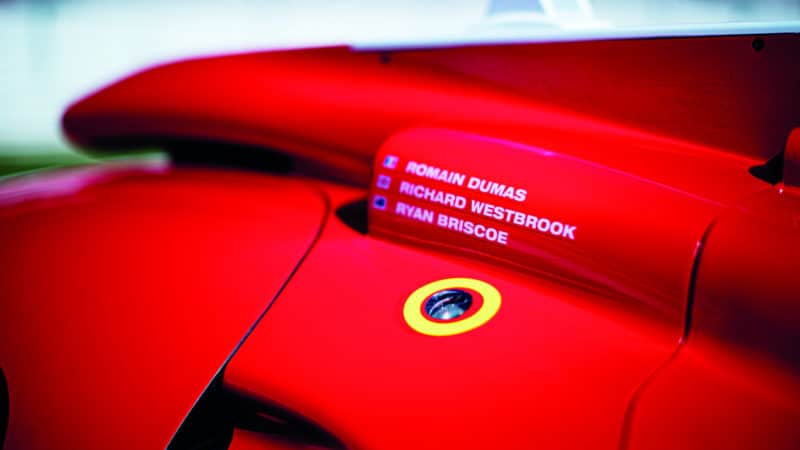
Glickenhaus has a team of seven drivers for the WEC season; Romain Dumas has two Le Mans victories under his belt – 2010 and ’16
Drew Gibson
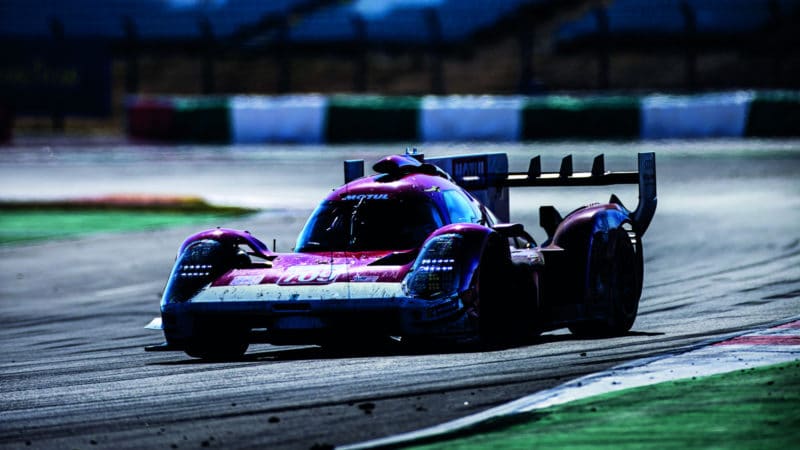
Drew Gibson
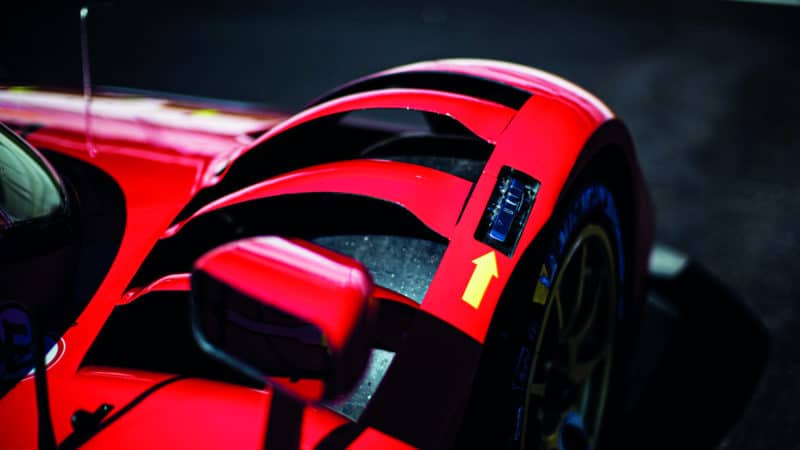
The car’s aerodynamic carbon-fibre composite profile was tested in Sauber’s wind tunnel
Drew Gibson
Graduation to the pinnacle of sports car racing and a shot at winning Le Mans overall was made possible by a seismic change in the WEC regulations. Out went the old LMP1 rulebook to be replaced by a new class for LMH prototypes. Not only were they framed to slash the budgets involved, but also to allow the new breed of machinery to look the part. The idea is that cars should look half prototype and half road-going supersportscar. The new ruleset was manna from heaven for Glickenhaus.
“I wanted to make a sports car that reminded me of the cars that I remember racing at Le Mans in the 1960s, a car that looked like my P3/4; LMH allows you to do that whereas LMP1 didn’t,” he says. “Those cars looked like jet fighters, and almost cost as much.”
The price of entry was also important for Glickenhaus, explains Luca Ciancetti, founding partner of the Italy-based Podium Advanced Technologies organisation, which is responsible for the 007, as well as its 003C and 004C predecessors.
“These regulations, on paper at least, give someone like Jim the chance to compete with the big guys,” he says. “In LMP1, a privateer had no chance. The philosophy of the rules now is different.”
History relates, however, that privateers tend not to win Le Mans. There’s a happy coincidence that Glickenhaus has forged a relationship with Joest Racing to bolster his operation at the race tracks. The German team was the last true privateer to win at La Sarthe back in 1997. It also won the event as an independent in 1984 and ’85.
“I wanted to make a car that reminded me of Le Mans in the 1960s”
But Glickenhaus Racing isn’t a privateer in the mould of Joest when it seemed like a perpetual frontrunner at Le Mans before its successful tie-up with Audi ahead of the 1999 season. Joest notched up its back-to-back wins in the 1980s with Porsche’s 956 Group C design and its ’97 victory as an indie came with the German marque’s WSC-95 LMP prototype with which it had triumphed the previous year as a works-supported entry.
Buying someone else’s car to go racing would be anathema to Jim Glickenhaus. A Ferrari nut he may be, but he never considered getting hold of one of its GT cars to fulfil his racing aspirations.
“No, because the Ferrari I knew and loved hasn’t existed for a number of years,” says Glickenhaus, who was honoured by the Italian marque when it allowed his P4/5 to wear its badges. “Quite frankly I am becoming what Ferrari used to be: a small constructor who makes road cars and takes the profit from them to go racing.”
- FAMILIAR FIN – Rules on lateral stability are laid down in the LMH rulebook. The Glickenhaus retains the high dorsal fin that has defined the look of LM prototypes from 2011 and also incorporates strakes on the rear wing.
- SAFETY UPGRADE – LMH prototypes are taller than their LMP1 predecessors to accommodate a more upright seating position. This is part of a new set of criteria for cockpit safety that follows extensive research by the FIA on real-world accidents and virtual modelling.
- RESTRICTED AERO – The LMH rules allow for only one adjustable aerodynamic device in the name of cost reduction. Glickenhaus and Podium haven’t told us yet what they can adjust and what they can’t.
- TORQUE CONTROL – Torque sensors on the driveshafts allow the rule makers to measure and control the power delivery of each LMH car. A torque curve is laid down for each car ahead of every race.
- SLEEK LINES – Glickenhaus forged a relationship with Sauber to fine-tune the shape of its LMH in its wind tunnel. It’s the same tunnel in which the rule makers measure the aero performance of the cars and scan the body shape so it can enforce the rule that demands only one aero configuration.
- TWO TYRE OPTIONS – The LMH rules allow two tyre-size options to its participants. Glickenhaus, with its two-wheeldrive non-hybrid machine, has opted for 13.5in fronts and 15in rears, while the Toyota races on 14in tyres all round.
- SPEC TYRES – Michelin, which has won Le Mans outright ever year since 1998, provides the tyres for all the cars in the Hypercar class. Introducing a single supplier was part of the drive for cost reduction.
- PUTTING ON THE STYLE – The modest aero targets in LMH allow manufacturers to create cars that look like their road-doing cousins. Or in the eye of Jim Glickenhaus, one of the classics he remembers from the 1960s.
Nor was he tempted by the alternative and cheaper route into the WEC’s top class, which is simply yet confusingly known as Hypercar. The LMDh category announced in January 2020 allows manufacturers to develop a car around an off-the-shelf LMP2 chassis and compete in both the WEC and the North American series. Audi, Porsche, BMW and Honda’s Acura brand are already signed up for the category due to come on stream in 2023.
“Buying an ORECA or whatever and putting a body on it wouldn’t have been a Glickenhaus,” says Jim. “I find it unbelievable that Porsche is doing that. I wanted to build a car from the ground up because that’s what we do – we’re a constructor.”
Or a garagista of the type that once proliferated at Le Mans and form an essential and evocative part of the history of the great race. Think Jean Rondeau, the only man to win the 24 Hours with a car bearing his own name – the Rondeau M379 in 1980 – and the last independent constructor to win, Alain de Cadenet and many more.
Ciancetti has perhaps a better term for his paymaster. He likens him to the mecenate, the wealthy patrons of the arts in Italy during the Renaissance period. “Call me Jim ‘Medici’ Glickenhaus,” quips the man himself. He is a rich guy. He says the foundation of his wealth was the success of The Exterminator: “I made a bit of money and invested half in Wall Street with the family firm [his late father, Seth, was a renowned investment manager] and used the other half to buy my Ford MkIV. I did something similar after every movie I made.”
Glickenhaus concedes that his exploits at Le Mans and beyond are probably going to make him a whole lot poorer. That’s what he told son Jesse, whose enthusiasm he credits for pushing him towards his dream.
“I told him, ‘But kid, you know you’re gonna end up with a whole let less money when I die if we do this,’” says Glickenhaus. “Jesse said he didn’t care.”
Glickenhaus likes to do things a little differently. Joest Racing might have been an obvious signing when he decided that he needed to bolster his race organisation, but he has ploughed his own path on the choice of partners for the chassis and engine.
Bringing in a team that has a total of 15 Le Mans wins to its name (11 with Audi, four with Porsche) — and that’s not counting its 2003 victory with Bentley when its crew ran the winning Speed 8 GTP — was a no-brainer, he says. The team was available after the end of its deal with Mazda in North America at the beginning of 2020. “It made sense; it was obvious,” he says.
“I wanted to build a car from the ground up, because that’s what we do”
But Glickenhaus has stayed loyal to Podium after forging a relationship in 2012 with the new company set up by a group of former PhD students from Turin University’s automotive engineering department. It was brought in for its hybrid expertise to work on the Modificata.
“They’re the brightest of young guys,” he says. “They understood hybrids, but they also understood racing and the road stuff. Podium was able to do everything for us.”
The 3.5-litre twin-turbo V8 that powers the 007 has been designed and developed by Pipo Moteurs. The French company, which was asked to bid for the programme by Ciancetti, has little experience in the world of endurance racing, though it was involved in the initial development on the engine in the first Bentley Continental GT3 racer that hit the track in 2013.
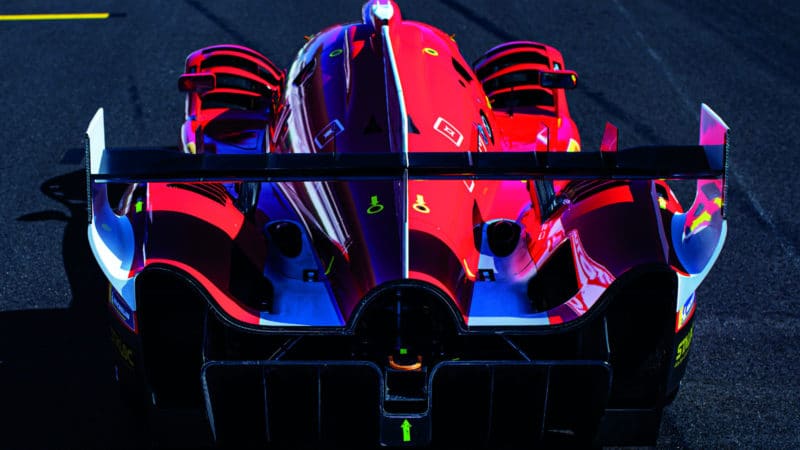
The car’s aerodynamic carbon-fibre composite profile was tested in Sauber’s wind tunnel
Drew Gibson
Pipo, based to the south of Lyon, does have extensive experience in the realm of off-road competition, though its successes came under the flags of Peugeot and Ford. Its engines helped Peugeot to a trio of World Rally Championship manufacturers’ titles in the early 2000s and Ford to a pair in the middle of the same decade.
The V8 engine builds on the experience of Pipo’s four-cylinder turbos produced for Peugeot, Ford and also Hyundai, explains general manager Frederic Barozier. The 3.5-litre capacity is no coincidence, he says. Take a couple of 1.6-litre WRC engines, increase the capacity a bit in order to reduce the turbo boost, and that’s what you arrive at.
Glickenhaus describes the engine as “one tough bitch”. It was wildly over-revved on the 007’s debut at in the Portimão 8 Hours, round two of the 2021 WEC in June. The red line is under 10,000rpm — “though with a margin” says Barozier — but a clutch issue sent the revs soaring to 11,900.
That was late in the second hour, when Ryan Briscoe spun after contact with a GTE Am car and failed to engage the launch control as he got going. The clutch was rooted in the process, but after an hour-long stay in the pits for it to be changed, the solo 007 entered in Portugal returned to the track and ran to the finish for another five hours.
Glickenhaus and Ciancetti believe they already have a reliable race car. A successful 30-hour test at the Aragon circuit in Spain prior to the car’s race debut convinced them of that. The task now ahead of the Le Mans 24 Hours on August 21/22 is to unlock the performance of the car over one lap and, perhaps most importantly, over multiple stints on the same set of Michelin tyres. Portimão was an important step on that road.
“Doing eight hours on this track isn’t easy,” said two-time Le Mans winner Romain Dumas, Glickenhaus’ star signing over the winter, in the wake of the car’s maiden appearance. “It was important to finish, and by getting back out there we learnt a lot.”
Glickenhaus gave his car “seven or seven and a half out of 10” for its performance at the Algarve Circuit near Portimão in the hands of Dumas, Briscoe and Richard Westbrook. He was expecting more from the 007 at round three of the WEC at the Monza 6 Hours in mid- July when his team was scheduled to run two cars for the first time. Three-time Sebring 12 Hours winner Luis Felipe ‘Pipo’ Derani, Olivier Pla, Gustavo Menezes and Franck Mailleux were set to join the line-up.
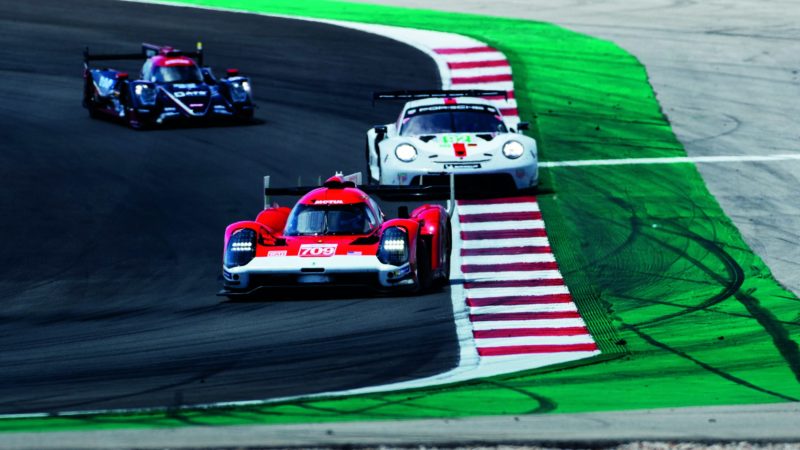
Victory at Le Mans? All eyes will be on Jim’s pair of 3.5-litre V8-engined 007s in August
Drew Gibson
Glickenhaus has seven drivers on its books and wanted to give each a race before making the final call on its Le Mans squad.
Glickenhaus is predicting more again when the 007 finally gets to stretch its legs on the 8.47-mile Circuit de la Sarthe. The car was conceived for the ultra-fast French track rather than the twists and turns of the Autódromo Internacional do Algarve.
He reckons he can give Toyota and Alpine – the only other contender in the Hypercar class for now with its old ORECA LMP1 design –a run for their money. At the very least.
“We’re gonna try to win this year, and I think it’s possible,” says Glickenhaus. “We’ve built a low-downforce car on purpose with Le Mans in mind. We are absolutely as fast as Toyota on vmax [maximum speed]; the only time they were quicker than us at Portimão was when they were slipstreaming each other.
“Glickenhaus reckons he can give Toyota and Alpine a run for their money”
“We weren’t disappointed by the lap-time differential. We know we are going to be better at Monza and better again at Le Mans. So why can’t we beat Toyota?”
He says the same about Ferrari, which will arrive as a competitor in 2023 with a new LMH contender.
“Ferrari is trying to win overall at Le Mans for the first time since 1965,” he says. “I might beat them to it. That’s my plan.”
